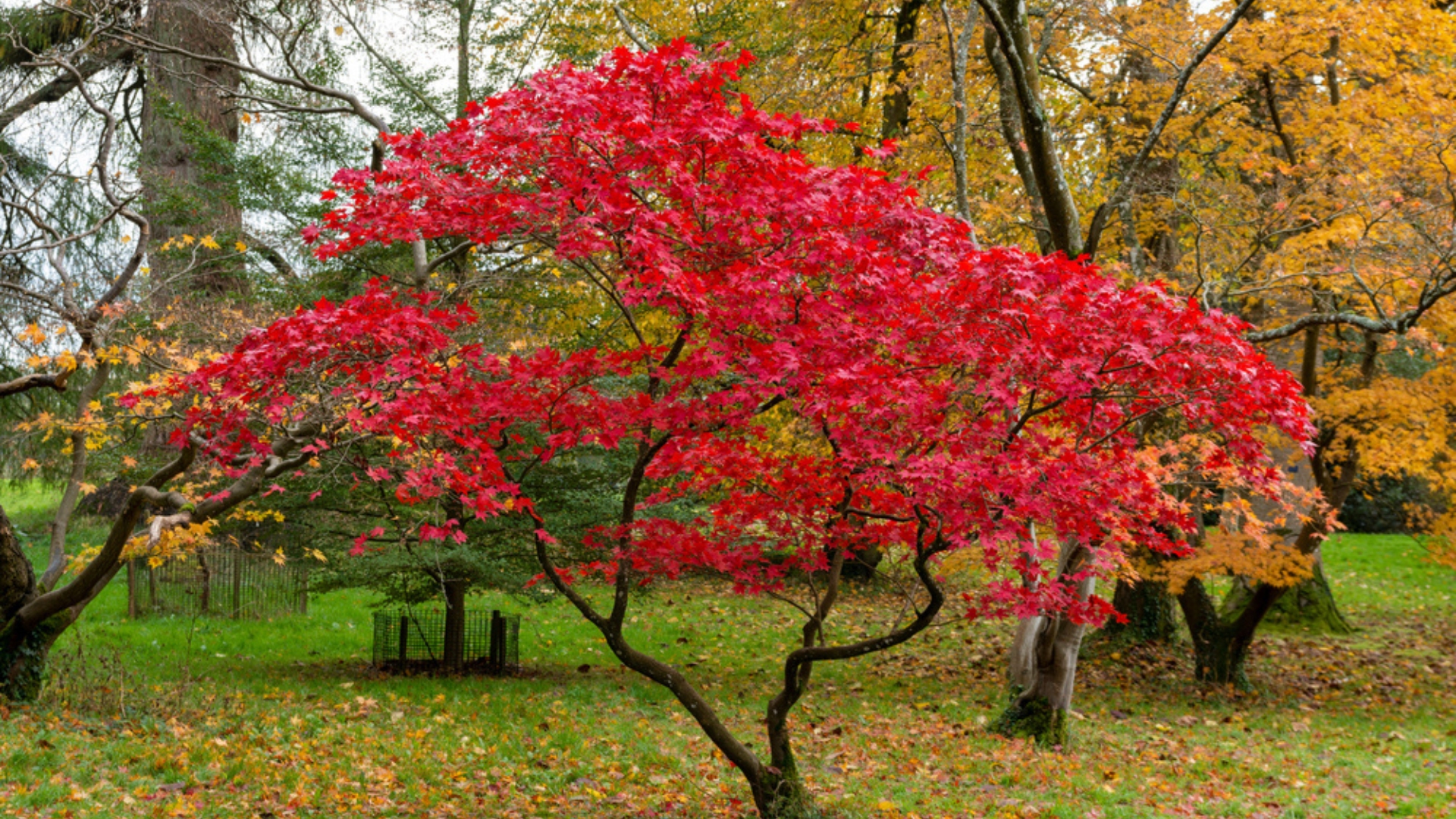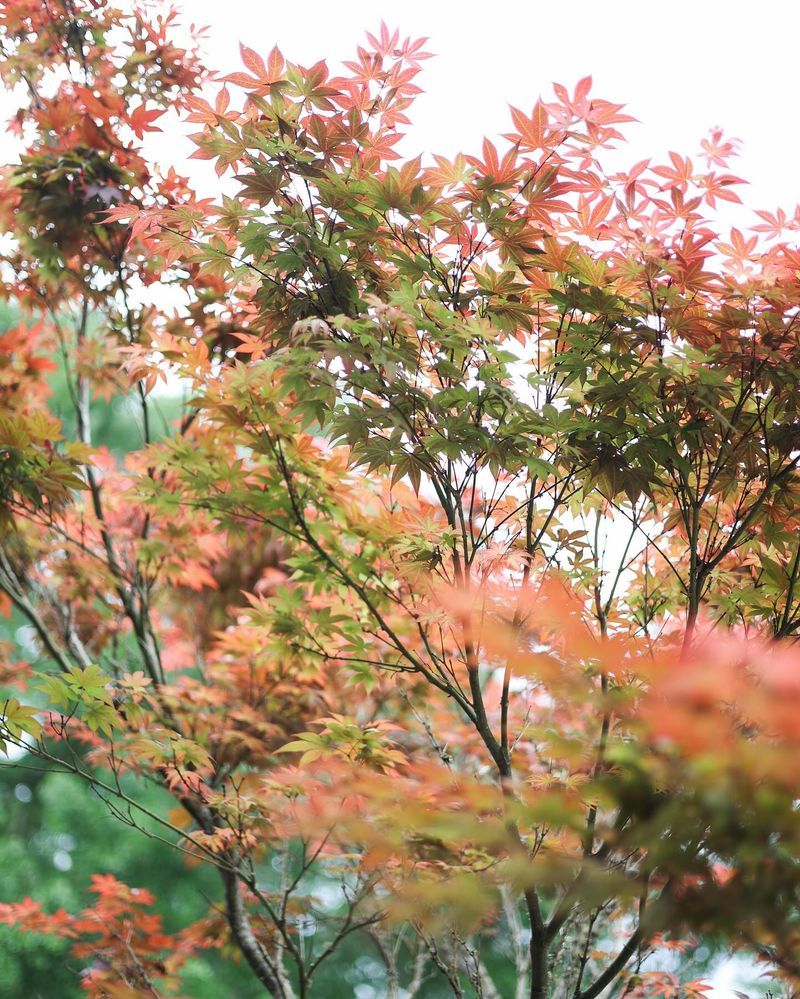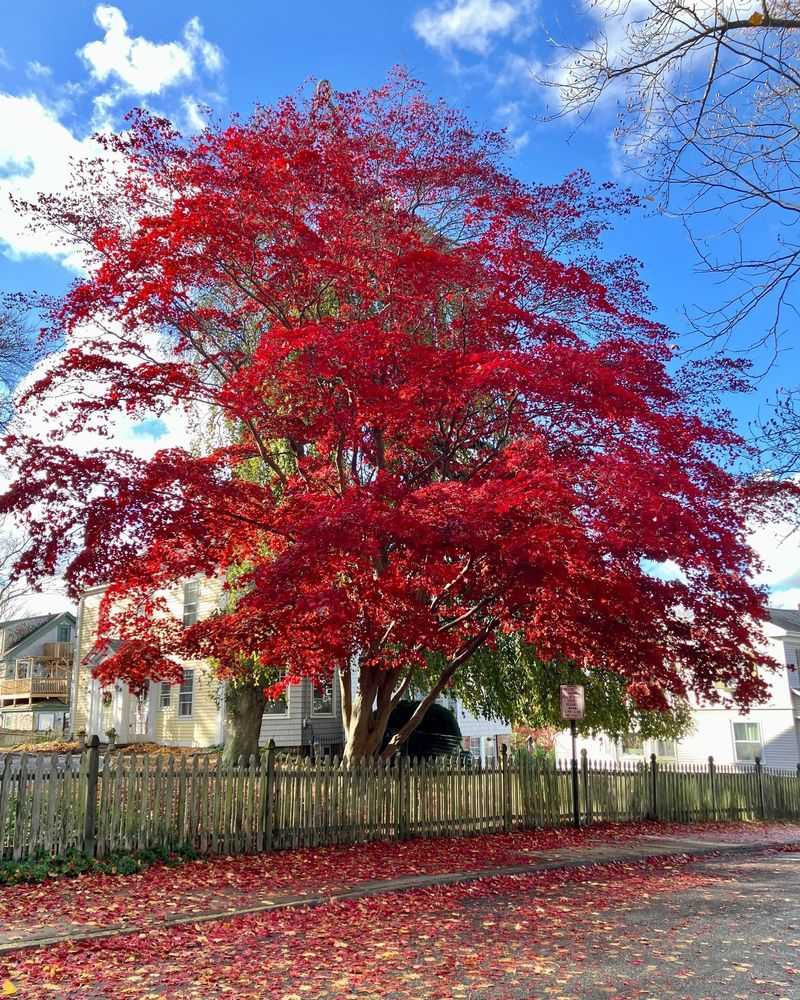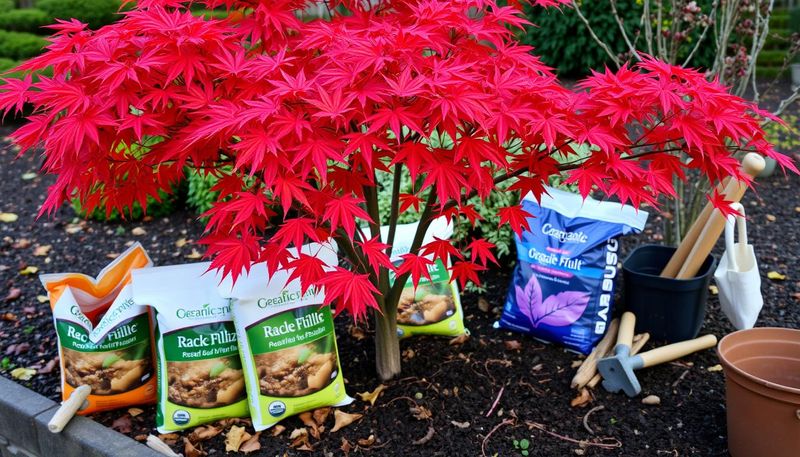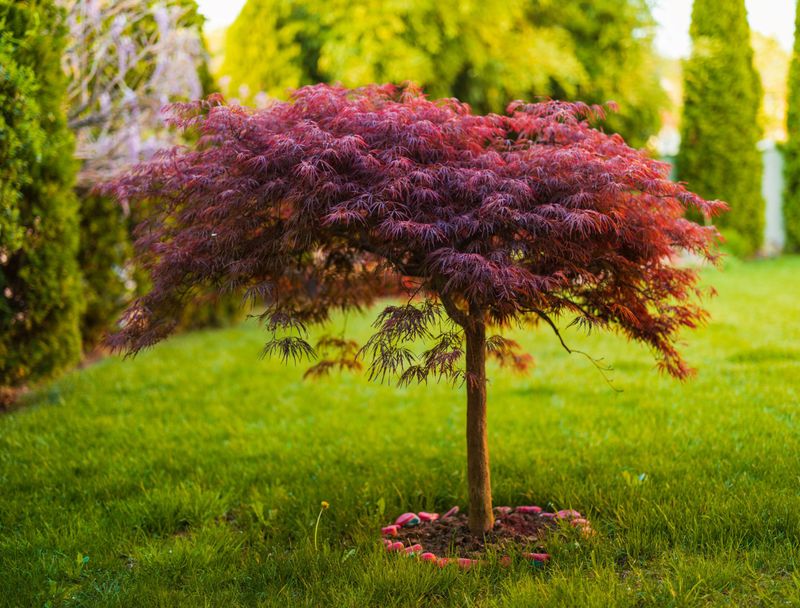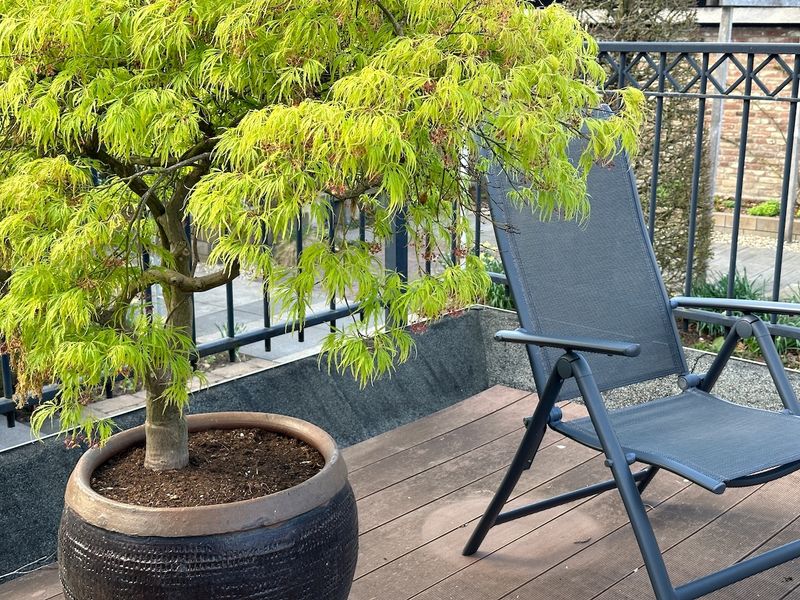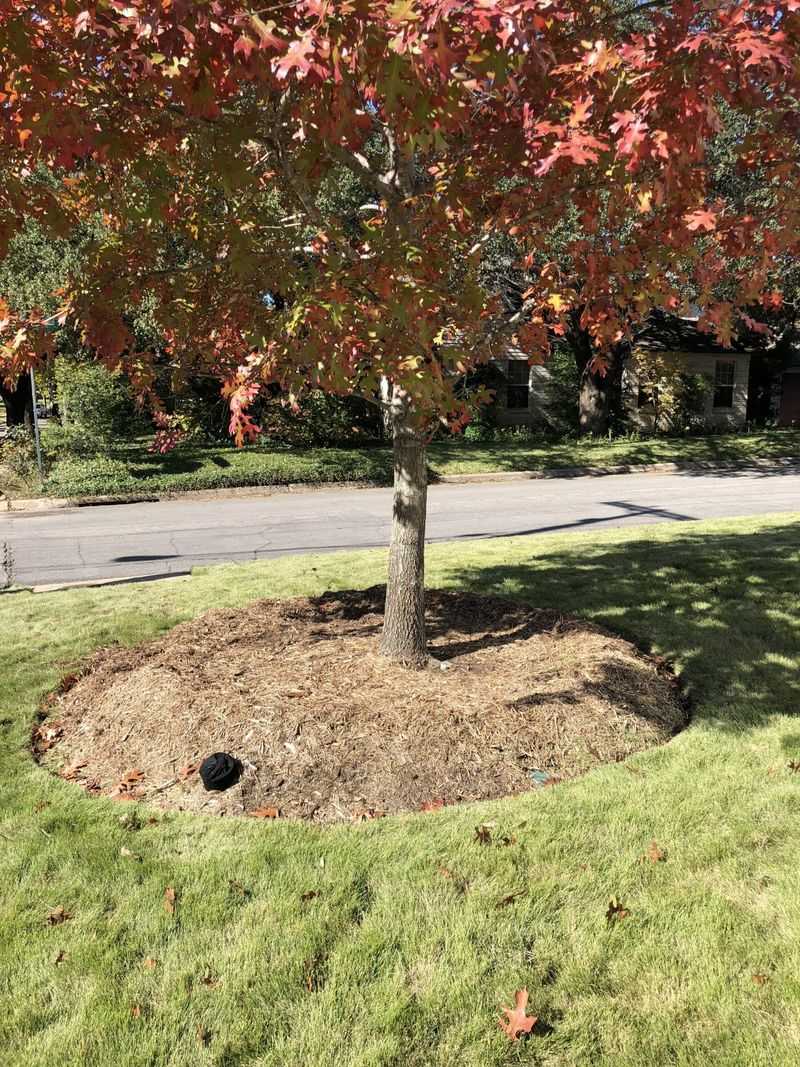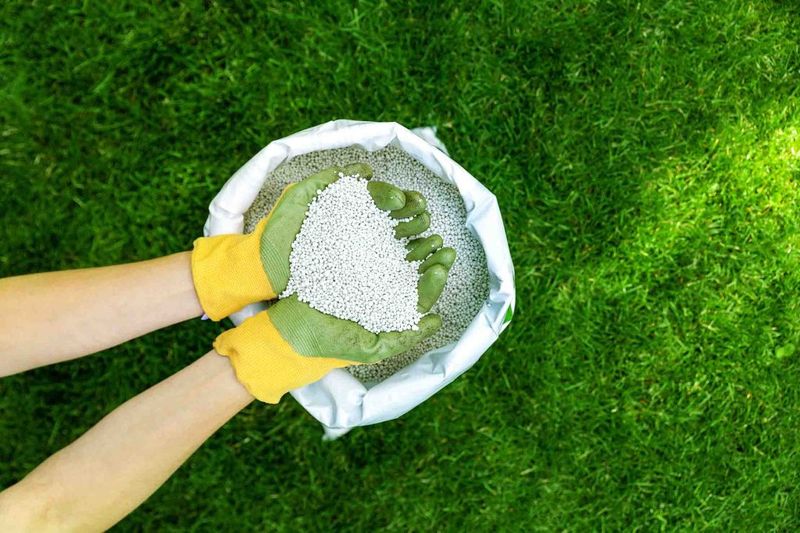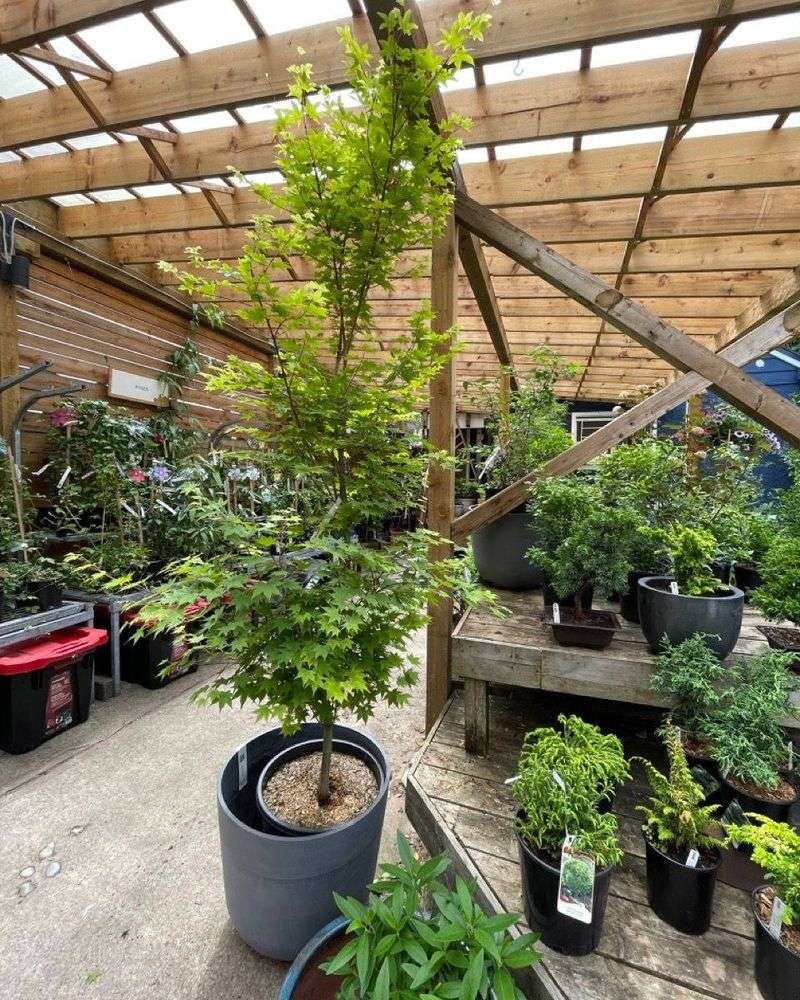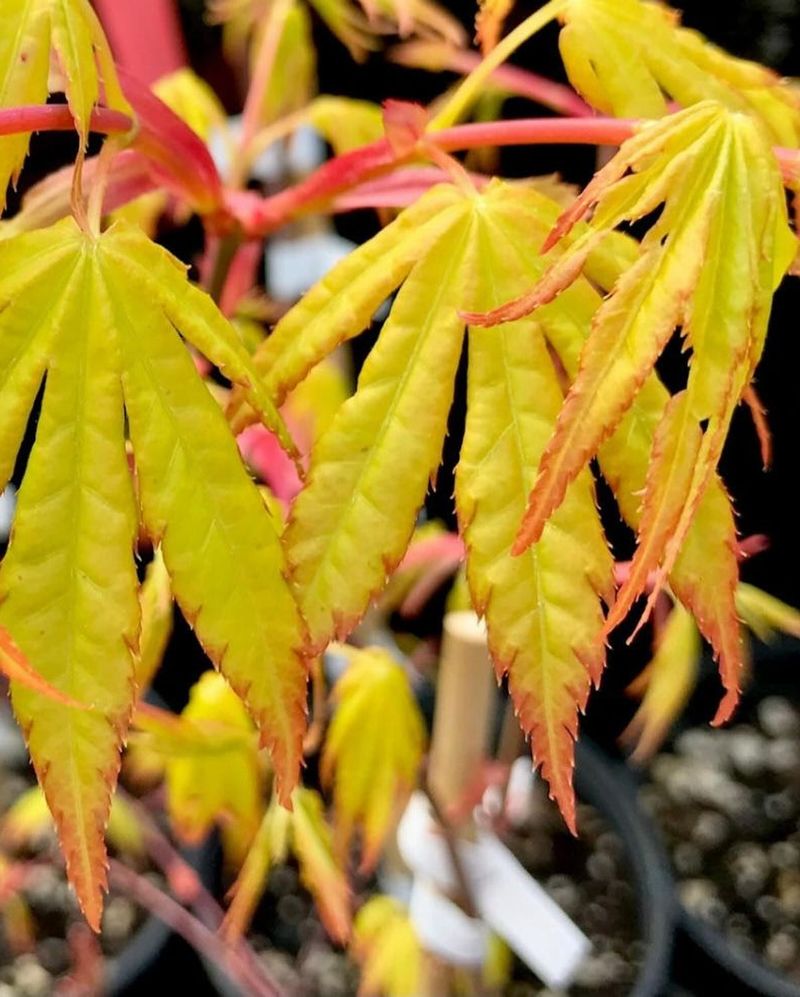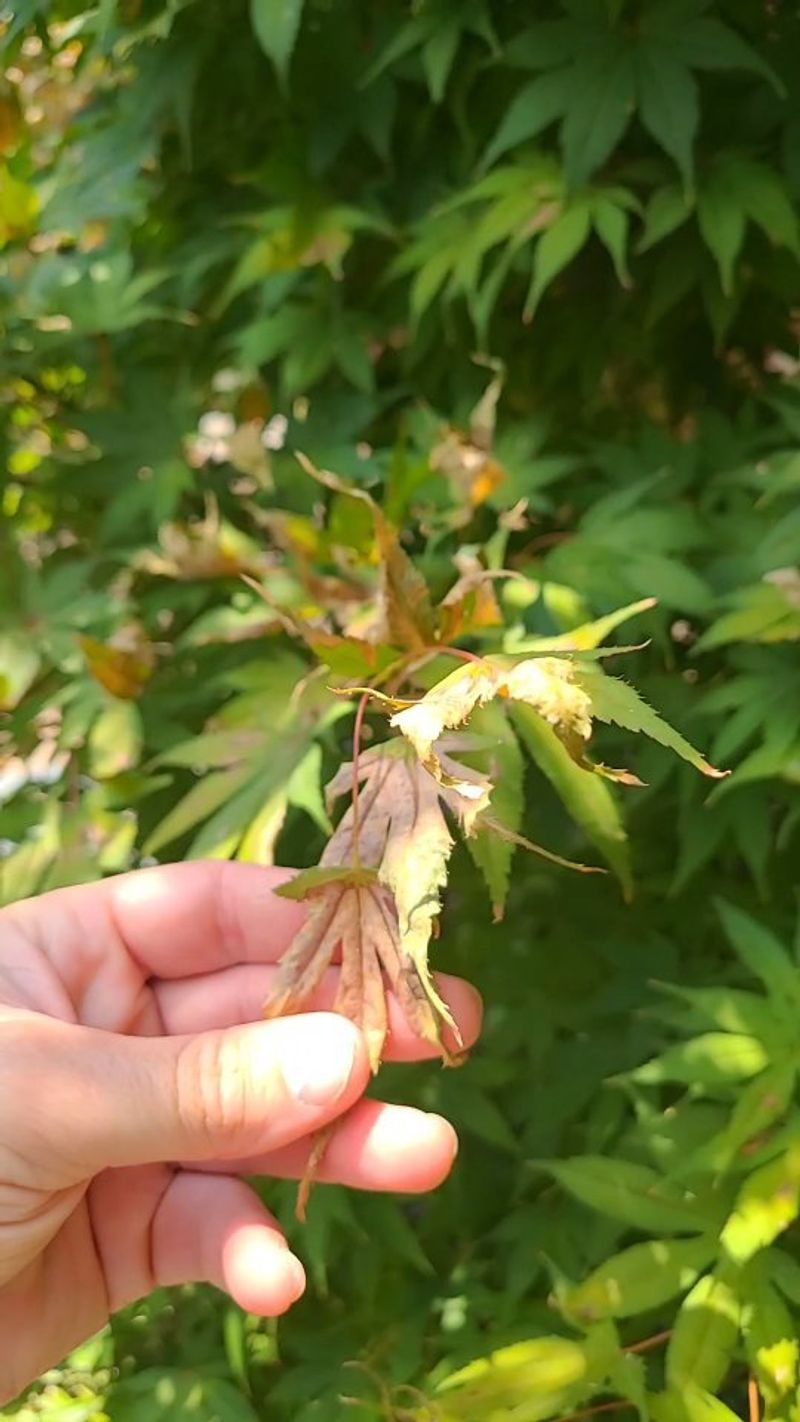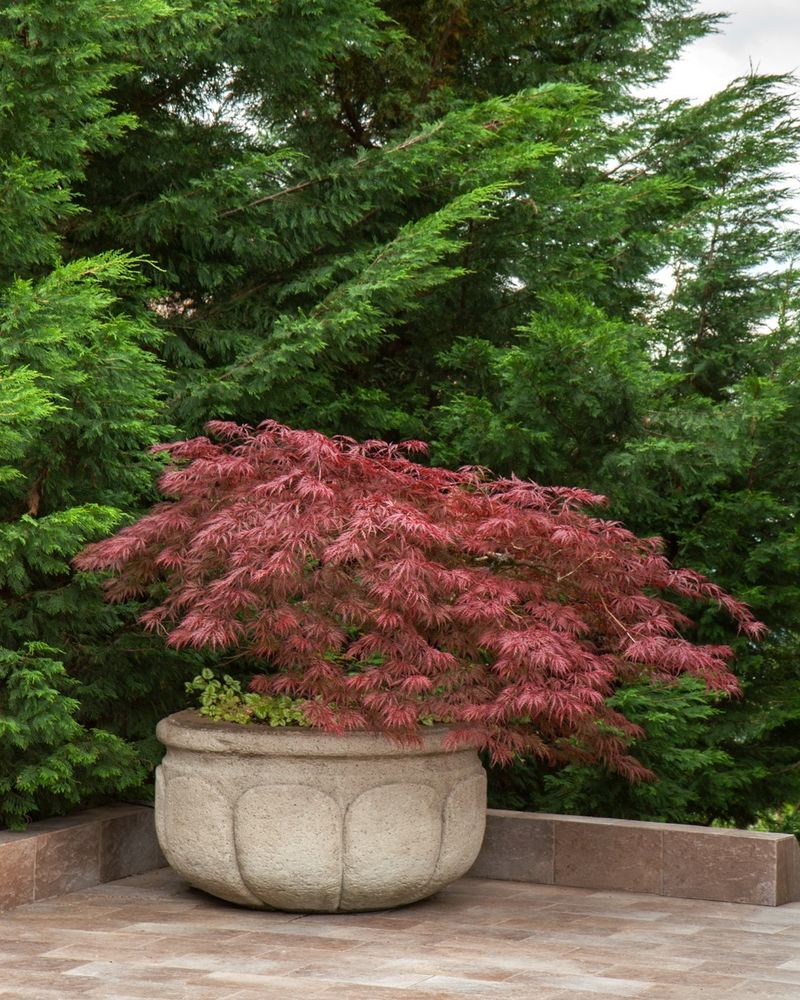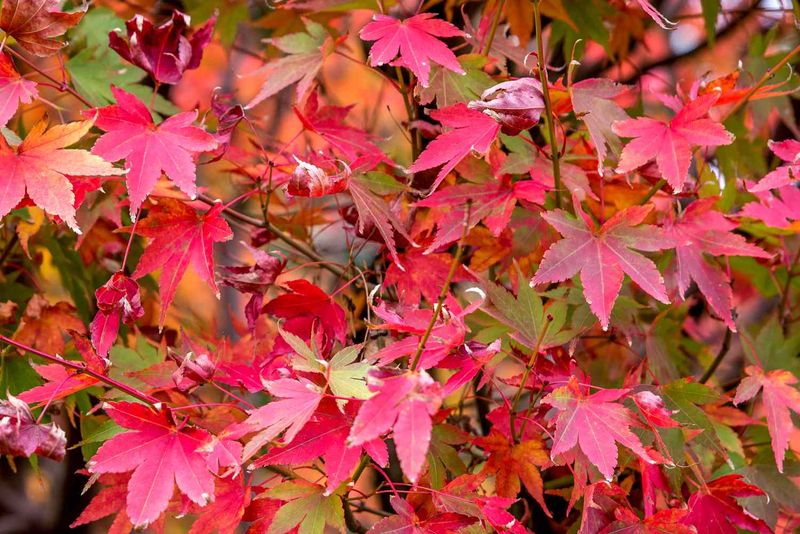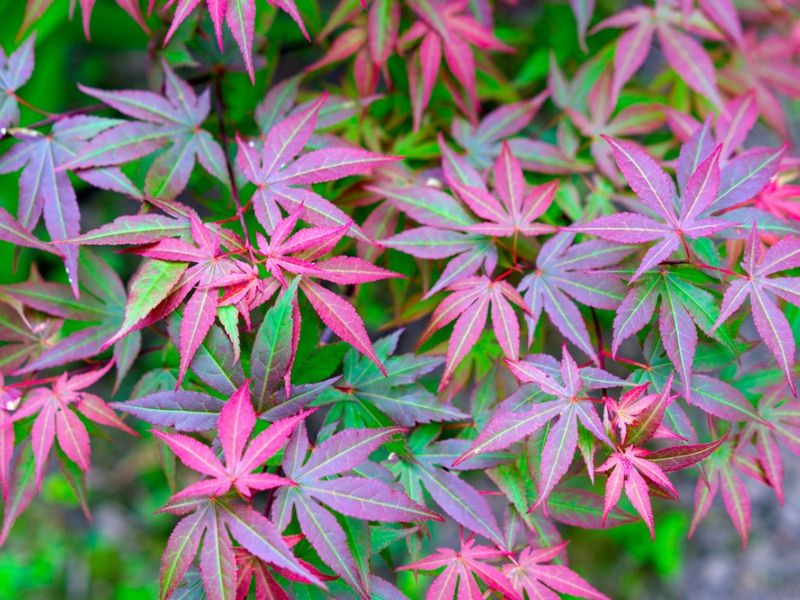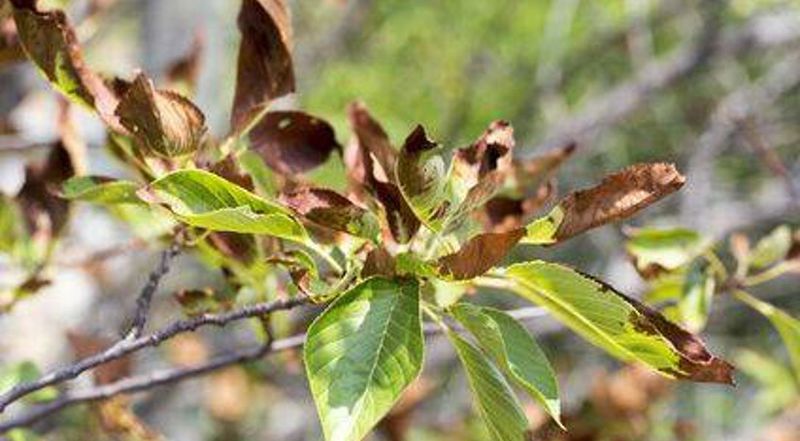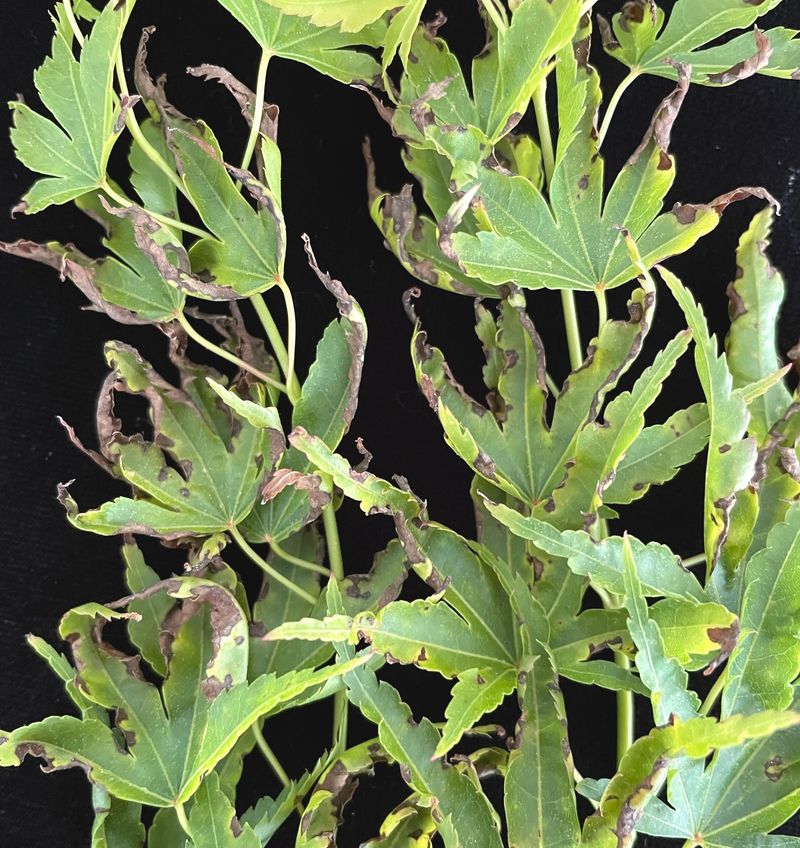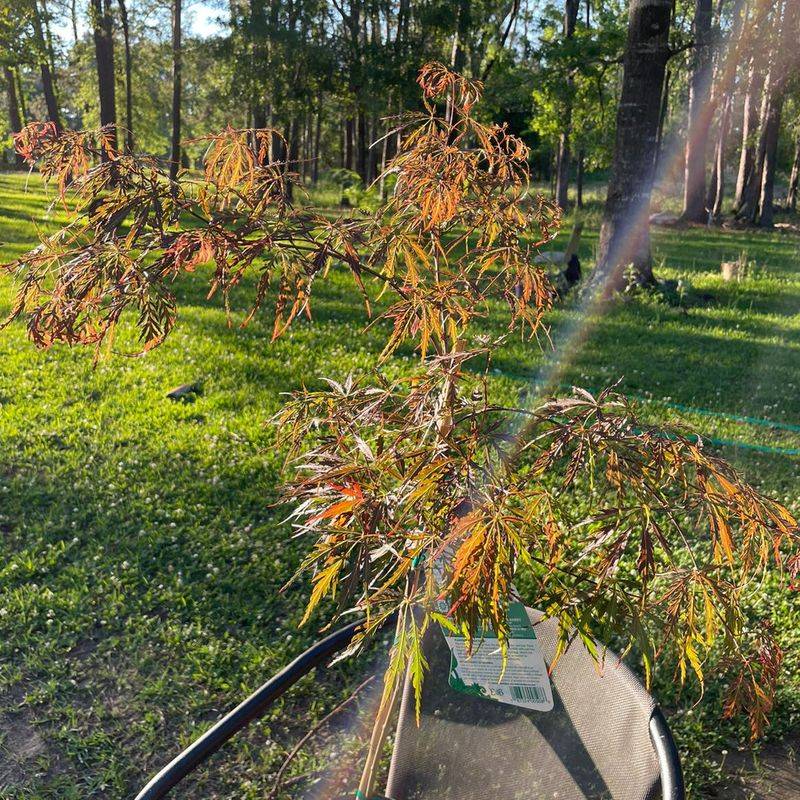Want your Japanese maples to turn heads with vibrant color and graceful growth? It all starts with smart fertilizing. These stunning trees may look delicate, but they thrive with the right nutrients at the right time.
In this guide, you’ll get 14 smart, foolproof tips for fertilizing Japanese maples—plus 3 common mistakes that could set your tree back. Let’s make sure your maple puts on a show every season!
1. Go Slow with Organic Fertilizers
Organic fertilizers release nutrients gradually, making them perfect for sensitive Japanese maples. They break down slowly in the soil, providing a steady stream of nourishment without shocking the tree’s system.
Compost, well-rotted manure, and fish emulsion are excellent organic options that won’t burn roots. These gentle fertilizers improve soil structure while feeding your maple, creating a healthier growing environment over time.
2. Time Your Feeding Perfectly
Early spring marks the ideal fertilizing window for Japanese maples – just as buds begin swelling but before leaves fully emerge. This timing allows nutrients to be available during the critical growth phase.
A second light feeding in early summer can support continued health. Never fertilize after mid-summer, as this stimulates tender new growth that won’t have time to harden off before winter, making your tree susceptible to cold damage.
3. Choose Low-Nitrogen Formulations
Japanese maples thrive with fertilizers containing lower nitrogen levels than standard tree formulations. High nitrogen causes rapid, weak growth that’s prone to damage and disease.
Look for fertilizers with NPK ratios like 5-10-10 or 4-8-8, where the first number (nitrogen) is lower than the others. This balanced approach promotes healthy root development and proper leaf coloration rather than forcing excessive foliage growth.
4. Water Thoroughly After Feeding
A good soaking after applying fertilizer helps dissolve nutrients and moves them to the root zone where they’re needed most. Without adequate water, dry fertilizer can concentrate and potentially burn delicate maple roots.
Use a gentle shower setting on your hose or watering can to apply water slowly, allowing it to penetrate deeply. This practice prevents fertilizer runoff and ensures your maple receives the full benefit of its feeding.
5. Mind the Drip Line
Apply fertilizer in a ring around your Japanese maple, extending from just beyond the trunk to slightly past the drip line (the outer edge of the branches). This targeting hits the active feeder roots that absorb nutrients.
Avoid piling fertilizer against the trunk, which can damage sensitive bark. Spreading fertilizer evenly throughout this zone ensures all roots receive nutrition and prevents concentrated pockets that might harm your tree.
6. Test Soil Before Fertilizing
Soil testing reveals exactly what nutrients your Japanese maple needs, preventing wasteful over-application or harmful imbalances. Many garden centers and extension offices offer affordable testing services that provide customized recommendations.
Japanese maples generally prefer slightly acidic soil with a pH between 5.5 and 6.5. Testing helps you adjust pH if needed, ensuring your fertilizer will be fully available to the tree rather than becoming locked in the soil.
7. Mulch After Fertilizing
A 2-3 inch layer of organic mulch over freshly fertilized soil extends the benefits significantly. Mulch conserves moisture, prevents weed competition, and gradually adds nutrients as it breaks down.
Keep mulch a few inches away from the trunk to prevent rot and rodent damage. Good mulch choices include shredded hardwood bark, pine straw, or composted leaves – all of which complement your fertilizing efforts by improving soil structure.
8. Consider Slow-Release Granules
Slow-release fertilizer granules provide steady nutrition over months rather than all at once. This measured feeding matches how Japanese maples naturally absorb nutrients in the wild.
These specialty granules contain nutrients coated in polymers that gradually dissolve with watering and time. One application in spring may be sufficient for the entire growing season, reducing the risk of over-fertilizing while saving you time and effort.
9. Adjust for Container-Grown Maples
Japanese maples growing in containers need more frequent fertilizing than those planted in the ground. The limited soil volume means nutrients deplete faster, especially with regular watering.
Use half-strength fertilizer applications every 4-6 weeks during the growing season. Container maples benefit from liquid fertilizers that provide immediate nutrition, but be careful not to exceed recommended rates as potted roots are more vulnerable to fertilizer burn.
10. Watch Leaf Color as Feedback
Your maple’s leaves provide valuable clues about its nutritional status. Pale green or yellowish leaves often signal nitrogen deficiency, while purple-tinged leaves on normally green varieties may indicate phosphorus issues.
Leaf margins turning brown could suggest fertilizer burn or potassium problems. By monitoring leaf appearance throughout the growing season, you can adjust your fertilizing approach before serious problems develop, ensuring your Japanese maple maintains its signature vibrant coloration.
11. Use Liquid Seaweed for Micronutrients
Liquid seaweed extract provides trace minerals and growth hormones that standard fertilizers often lack. These micronutrients play crucial roles in overall tree health and stress resistance.
Apply as a foliar spray in early morning or evening for direct leaf absorption. The gentle formula can be used monthly during the growing season without risk of burn. Japanese maples treated with seaweed extract often show improved drought tolerance and enhanced fall color.
12. Adjust Based on Tree Age
Young Japanese maples (under 3 years) need lighter, more frequent fertilizing to establish strong roots without pushing excessive top growth. Half-strength applications every 4-6 weeks during spring and early summer support steady development.
Mature trees require less frequent feeding – usually just once in spring. Well-established Japanese maples often thrive with minimal supplemental fertilizer, especially when growing in naturally fertile soil with good organic matter content.
13. Balance Fertilizing with Growth Goals
Consider your aesthetic goals when planning fertilization. For compact, densely branched maples with vibrant leaf color, use less fertilizer to encourage slower, sturdier growth.
For faster development in young specimens, slightly more frequent feeding might be appropriate. Remember that the distinctive characteristics of Japanese maples – intricate branching patterns and delicate leaves – develop best with moderate rather than aggressive fertilizing approaches.
14. Make Your Own Maple Tea Fertilizer
Create a gentle homemade fertilizer by steeping compost in water for several days. This “compost tea” provides natural nutrients perfectly suited for sensitive Japanese maples.
Fill a bucket one-third with finished compost, then add water to the top. After steeping for 3-5 days, strain the liquid and dilute it to the color of weak tea. This mild solution can be applied monthly during the growing season without risk of root burn.
15. MISTAKE: Over-Fertilizing Damages Roots
Excessive fertilizer burns delicate Japanese maple roots, causing leaf scorch, branch dieback, and potentially killing the entire tree. The concentrated salts in fertilizer draw moisture from roots when applied too heavily.
Symptoms of over-fertilization include brown leaf edges, stunted growth, and wilting despite adequate water. Always measure fertilizer precisely and follow package directions, remembering that Japanese maples need less fertilizer than many other landscape trees.
16. MISTAKE: Using Lawn Fertilizer on Maples
Lawn fertilizers contain high nitrogen levels designed for grass growth, not trees. Using these products on Japanese maples forces rapid, weak growth that’s susceptible to breakage and winter damage.
The herbicides often included in lawn fertilizers can severely damage or kill Japanese maples. Their shallow roots readily absorb these chemicals. Always use products specifically formulated for trees or acid-loving plants when feeding your Japanese maples.
17. MISTAKE: Fertilizing During Drought
Applying fertilizer during dry periods concentrates nutrients in the soil, potentially burning roots. Japanese maples already under drought stress can be severely damaged by this additional pressure.
Always water thoroughly before and after fertilizing if conditions are dry. Better yet, postpone fertilizing entirely until normal moisture levels return. A stressed maple needs water, not food, to recover from drought – adding fertilizer during this vulnerable time can do more harm than good.

